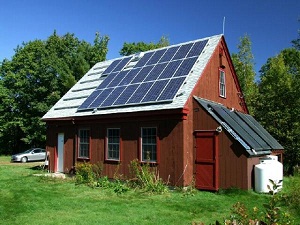Solar time machine: What happened last week?
 Last week President Barack Obama delivered his State of the Union speech and rather than entirely shying away from solar and renewable energy in light of Solyndra and other fits and starts of solar companies as the industry goes through a rapid puberty, he pushed for more incentives and a national clean energy standard. Elsewhere the industry moved forward with some tumult, as expected of any teenager.
Last week President Barack Obama delivered his State of the Union speech and rather than entirely shying away from solar and renewable energy in light of Solyndra and other fits and starts of solar companies as the industry goes through a rapid puberty, he pushed for more incentives and a national clean energy standard. Elsewhere the industry moved forward with some tumult, as expected of any teenager.
Perhaps one of the most volatile things going on in solar right now is the fight over which is more damaging to U.S. solar industry: cheap chinese PV modules or The Coalition for American Solar Manufacturing’s (CASM’s) fight against them. The organization has alleged that Chinese module manufacturers flooded the U.S. market with inventory in November and December, and asked the International Trade Commission to impose retroactive duties on modules imported during that period.
Obama touched on the trade dispute case in his State of the Union address. He also outlined a number of goals for solar and clean energy in general. And while he said he would not walk away from the solar, wind or battery industries, he did not offer many new ideas in the annual address to Congress. He said the Administration would seek more solar by opening up federal lands for clean energy development and making the military a large purchaser of clean energy. He placed the ball firmly in Congress’ court, asking them to pass a clean energy standard, which got mixed reviews from solar analysts.
The CASM case focuses on silicon-based PV, which comprise the majority of the market. But thin-film PV is continuing to grow. A recent report from Lux Research found that the amount of installed copper indium gallium selenide-based PV will double by 2015 over 2011. At that point the business could be worth $2.3 billion annually.
In other solar news, KB Homes announced that it was making solar a standard on new homes in the Fisher Plantation development in Florida. It will install 1.4-kilowatt photovoltaic systems on the 52 homes in the Apopka community near Orlando.
Meanwhile two of the world’s largest electronics manufacturers, General Electric and Siemens, pushed forward with their plans in the renewables sector.
For instance, GE will supply 23 megawatts of modules to Invenergy’s Grand Ridge Solar project adjacent to the company’s Grand Ridge Wind project in Illinois. The company is looking to other projects for other complimentary projects as well.
Siemens is working to bring more smart-grid technology—which can better integrate solar, wind and diverse energy sources into the grid—to the U.S. Such technology is being looked at by the military and others to create microgrids, which could provide reliable energy locally from resources like solar even when the larger grid fails. The company announced the new Siemens Government Technologies division chaired by retired Gen. Stanley McChyrstal. The group will work to address the issue of aging grid structure and how Siemens can help with the next generation of the electric grid and provide increased energy security and reliability.
The U.S. solar industry lost a powerful tool this year, the 1603 Treasury Grant program, which helped spur low-interest-rate investments in solar projects. Now it’s up to project developers to create the relationships with financiers to have access to project capital. Wells Fargo and Enfinity America Corp. recently reached such an agreement, with the bank creating a $100 million tax-equity fund to support Enfinity’s project pipeline. Enfinity will use the fund to give its commercial clients access to project financing and some power-purchase agreements.
Image courtesy of the American Solar Energy Society's National Solar tour.



